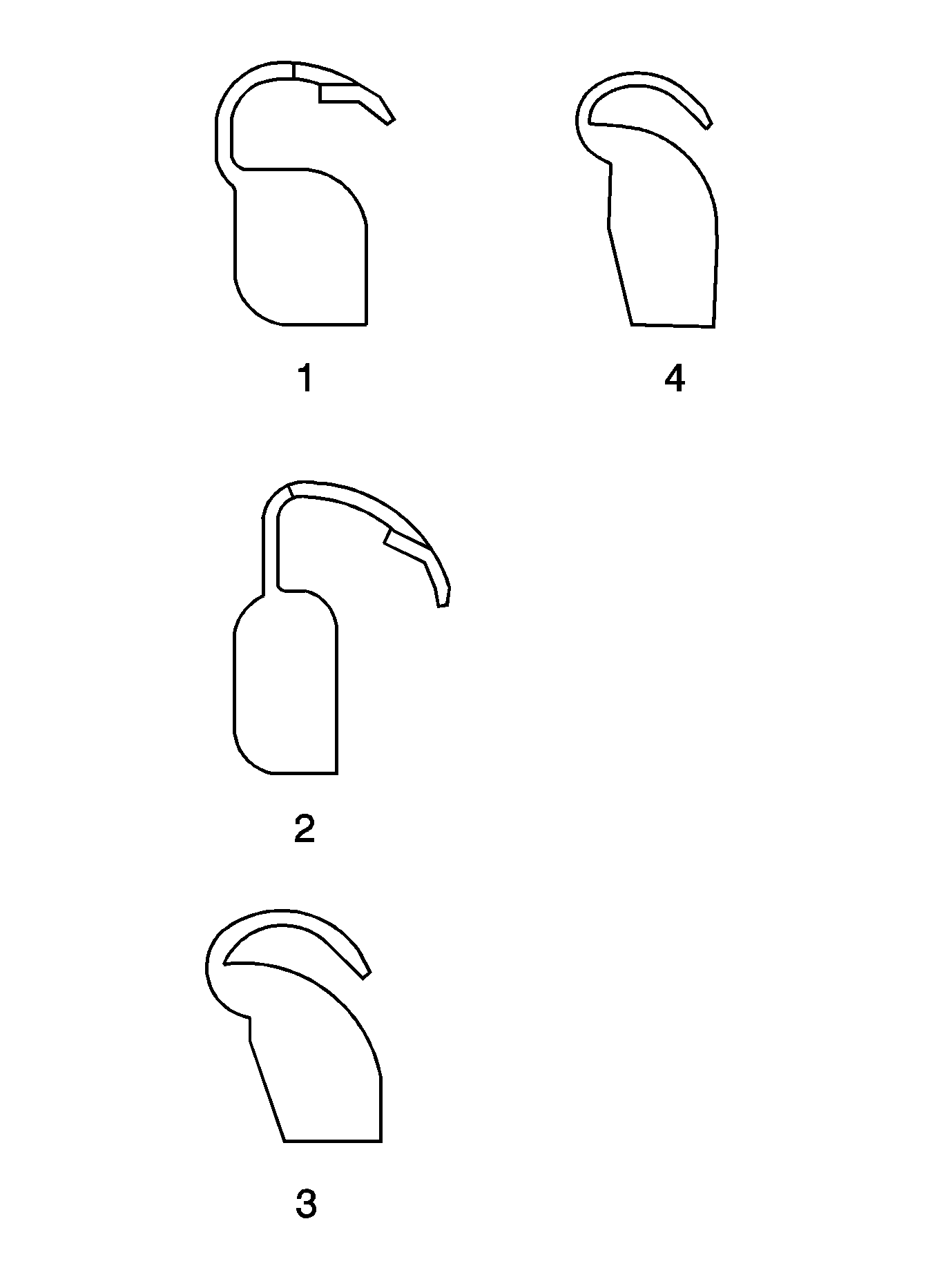Caution: Failure to adhere to the following precautions before tire balancing
can result in personal injury or damage to components:
| • | Clean away any dirt or deposits from the inside of the wheels. |
| • | Remove any stones from the tread. |
| • | Use coated weights on aluminum wheels. |
Important: Use a known good, recently calibrated off-car two plane dynamic balancer.
Use the finest balance mode available in order to perform a perfect balance
of the assembly. The center pilot hole is the primary locator. Back
cone mounting is recommended. If any assembly calls for more than 7 grams
(1/4 ounce) on either rim flange, remove all balance weights
and re-balance.
Tire and wheel balancers can drift out of calibration without warning,
or can become inaccurate as a result of abuse. The balancer calibration should
be inspected according to the manufacturer's requirements.
Tire Balancer Calibration Test
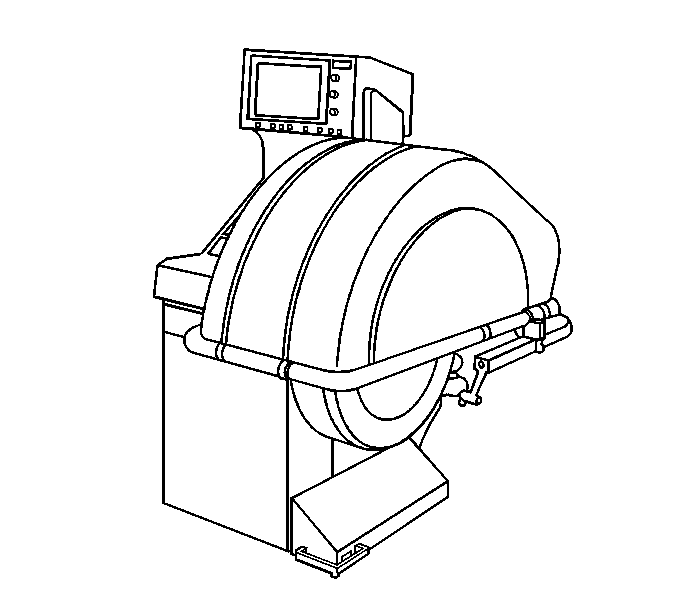
Important: Calibrate the tire balancer according to the manufacturer's recommendations,
or use the following procedure.
- Spin the balancer without a wheel or any of the adapters on the shaft.
- Inspect the balancer readings.
Specification
0-7 g (0.00-0.25 oz)
- Balance a tire and wheel assembly that is within radial and lateral
tolerances to ZERO.
- Add an 85 g (3 oz) test weight to the wheel at any
location.
- Spin the tire and wheel assembly again. Observe the readings.
| • | In the static and dynamic modes, the balancer should call for
85 g (3 oz) of weight, 180 degrees opposite the test
weight. |
| • | In the dynamic mode only, the weight should be called for on the
flange of the wheel opposite the last weight. |
- With the assembly unbalanced to 85 g (3 oz), cycle
the balancer five times.
- Take the balancer readings.
Specification
Variation: 7 g (0.25 oz) or less
- Index the tire and wheel assembly at four separate locations on
the balancer shaft, 90 degrees apart.
- Cycle the balancer with the assembly at each location.
- Take the balancer readings.
Specification
Variation: 7 g (0.25 oz) or less
Tire Balancing Guidelines
Static and dynamic balance are the 2 kinds of
tire/wheel balance:
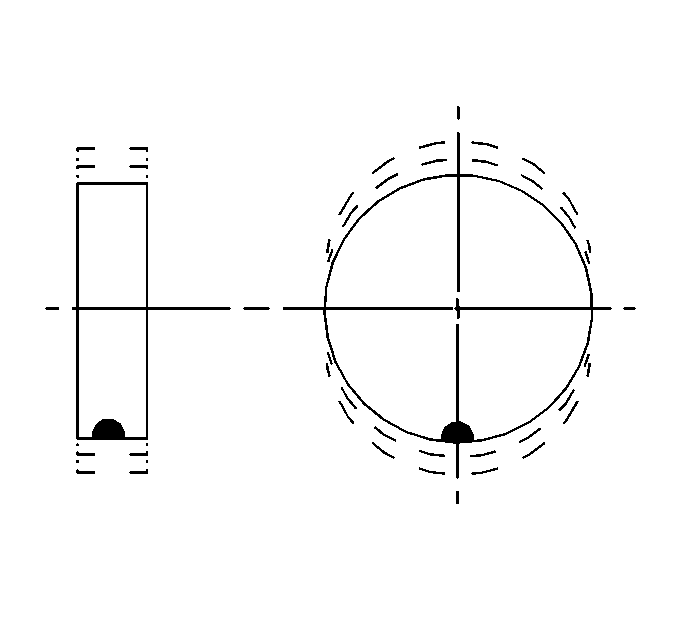
| • | Static balance, also called
single plane balance, affects the distribution of weights around the wheel
circumference. |
| • | Dynamic balance, or two-plane balance, affects the distribution
of weight on each side of the tire/wheel centerline. |
Most off-vehicle balancers can check both types of balance simultaneously.
As a general rule, most vehicles are more sensitive to static imbalance
than to dynamic imbalance. As little as 14-21 g (0.50-0.75 oz)
may induce a vibration in some vehicles. Vibration induced by
static imbalance will cause a vertical, or bouncing, motion
of the tire.
Dynamic imbalance
results in a side-to-side motion of the tire, or shimmy.
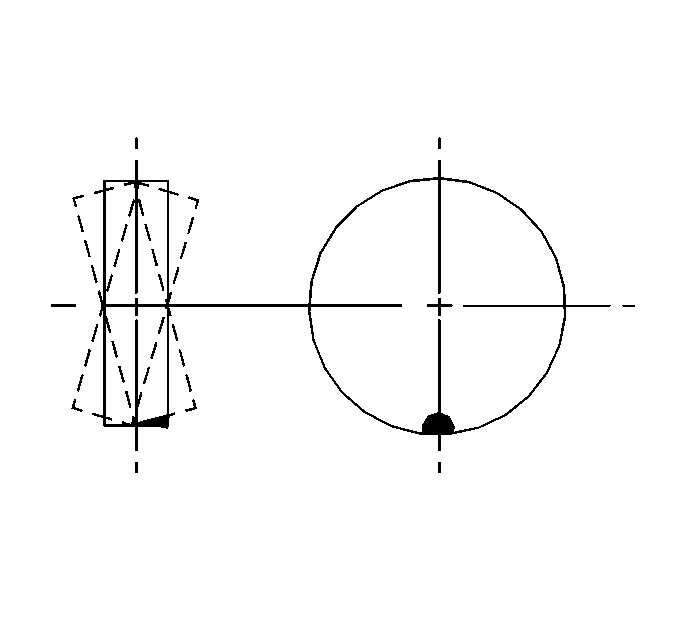
| • | Balance all four tires
as close to ZERO as possible. |
| • | Carefully follow the wheel balancer manufacturer's instructions
for proper mounting techniques for different types of wheels. |
| • | Aftermarket wheels, especially those incorporating universal lug
patterns, are potential sources of runout and mounting problems. |
| • | Use the correct coated weights on aluminum wheels. |
| • | Retest the tire and wheel assemblies for excessive runout after
correction and installation. |
| • | Evaluate the vehicle at the concern speed and note if the vibration
has been corrected. |
| • | If the vibration is still present, or is reduced but still unacceptable,
consider these possibilities: |
| - | Radial or lateral force variation |
Wheel Weight Usage
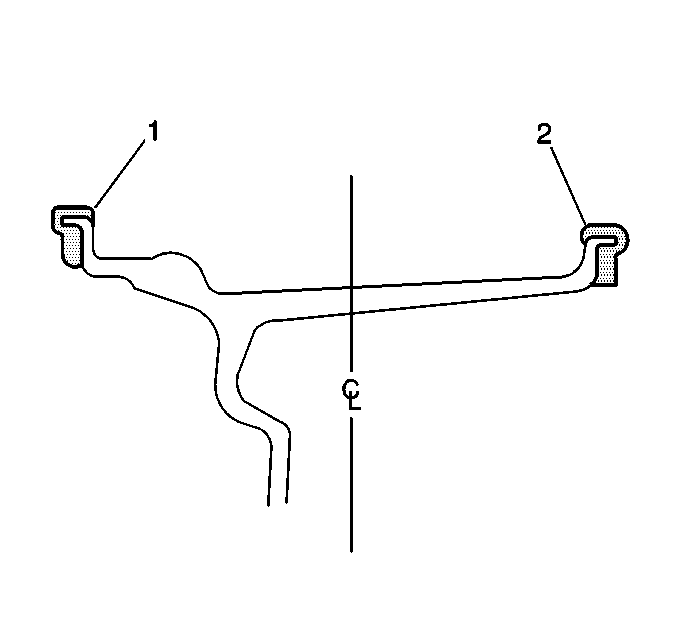
Two methods for balancing
wheels are the dynamic balancing method and the static balancing method. When
using the dynamic balancing method, place the clip-on balance weights
on the inboard rim flange (2) and the outboard rim flange (1)
at the positions specified by the tire balancer. When using the
static balancing method, place the weight on the inboard (2)
flange if the weight is 28 grams (1 ounce) or less.
If more than 28 grams (1 ounce) is required to balance
the wheel, split the total weight required between the inboard
rim flange (2) and the outboard rim flange (1).
